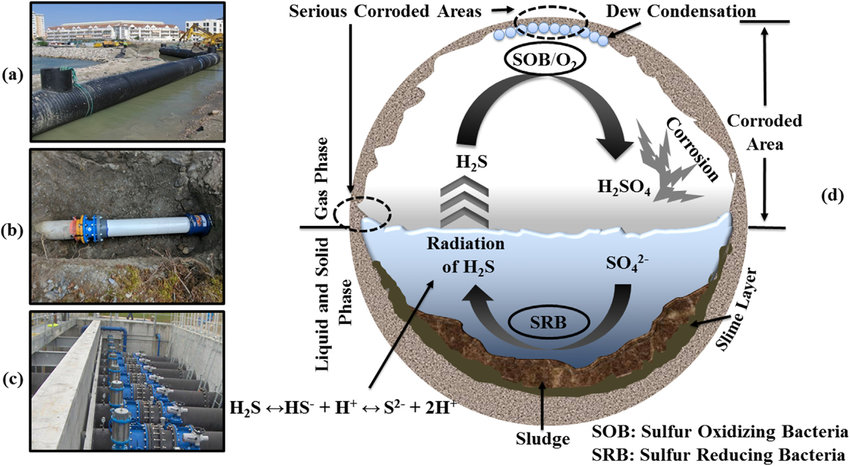In the intricate web of urban infrastructure, gravity sewerage systems emerge as fundamental players in the efficient disposal of wastewater. These systems, relying on the force of gravity, provide a reliable and cost-effective means of transporting sewage from homes, businesses, and industries to treatment facilities. This article explores the essential characteristics, advantages, and considerations associated with gravity sewerage systems, shedding light on their crucial role in maintaining the sanitation and hygiene of urban environments.
The Principle of Gravity:
At the heart of a gravity sewerage system is the force that has guided the flow of water since time immemorial – gravity. The system capitalizes on the natural slope of the terrain to facilitate the movement of wastewater from higher elevations to lower points, ultimately leading it to treatment plants. This reliance on gravity offers simplicity and efficiency, making gravity sewerage systems a cornerstone of urban planning.
Components of a Gravity Sewerage System:
Collection Pipes: Gravity sewerage systems begin with a network of collection pipes that connect individual properties to the main sewer lines. These pipes are typically made of durable materials like PVC, concrete, or clay, ensuring longevity and resistance to corrosion.
Main Sewer Lines: The main sewer lines constitute the primary conduits through which wastewater flows toward treatment plants. These larger-diameter pipes are strategically placed beneath roads or other public spaces, following the natural topography to facilitate the unimpeded flow of sewage.
Manholes: Manholes are integral components that provide access points for inspection, maintenance, and ventilation within the sewerage system. Positioned at key locations along the collection and main sewer lines, manholes play a crucial role in ensuring the smooth operation of the system.
Advantages of Gravity Sewerage Systems:
Cost-Effectiveness: Gravity sewerage systems are often more cost-effective to implement compared to alternative technologies. The simplicity of the design and the lack of reliance on mechanical components contribute to reduced construction and maintenance costs.
Energy Efficiency: Unlike systems that require pumps for wastewater transportation. Gravity sewerage systems operate without the need for continuous energy input. The force of gravity itself propels the flow, resulting in a more energy-efficient and environmentally friendly solution.
Reliability and Low Maintenance: The straightforward design of gravity sewerage systems contributes to their reliability and ease of maintenance. With fewer mechanical components and reliance on gravity, the likelihood of system failures is minimized, and maintenance tasks are generally simpler.
Scalability: Gravity sewerage systems can be easily scaled to accommodate the changing needs of growing urban populations. As cities expand, additional collection pipes and main sewer lines can be added, seamlessly integrating with the existing infrastructure.
Considerations and Challenges:
Topography and Design: The success of a gravity sewerage system hinges on the careful consideration of topography during the planning and design phases. Engineers must analyze the terrain to ensure that the slope is sufficient for the effective flow of wastewater.
Depth and Inverts: The depth of pipes and the positioning of inverts (the lowest point along a pipe) are critical factors. Proper depth and invert design contribute to the consistent flow of sewage and prevent issues such as sedimentation and blockages.
Terrain Variations: Urban areas often feature variations in terrain, including hills, valleys, and flat areas. Engineers must address these variations to ensure that the gravity sewerage system functions optimally across diverse landscapes.
Integration with Treatment Plants:
Gravity sewerage systems seamlessly integrate with wastewater treatment plants, ensuring the efficient removal of contaminants and pollutants. Treatment processes include primary and secondary treatments. The treated water is eventually released into water bodies or repurposed for non-potable applications.
Environmental Impact:
Gravity sewerage system, when properly designed and maintained, have a minimal environmental impact. They prevent the discharge of untreated sewage into water bodies, reducing the risk of water pollution and protecting ecosystems.
Conclusion:
In the realm of wastewater management, gravity sewerage systems stand as resilient, cost-effective, and environmentally friendly solutions. By harnessing the force of gravity, these systems efficiently transport sewage from various sources to treatment plants, safeguarding public health and the environment. As cities continue to evolve and expand, the role of gravity sewerage systems remains pivotal in building sustainability. Efficient, and reliable urban sanitation infrastructure. Their simplicity, reliability, and scalability make them enduring elements in the tapestry of modern urban planning.

